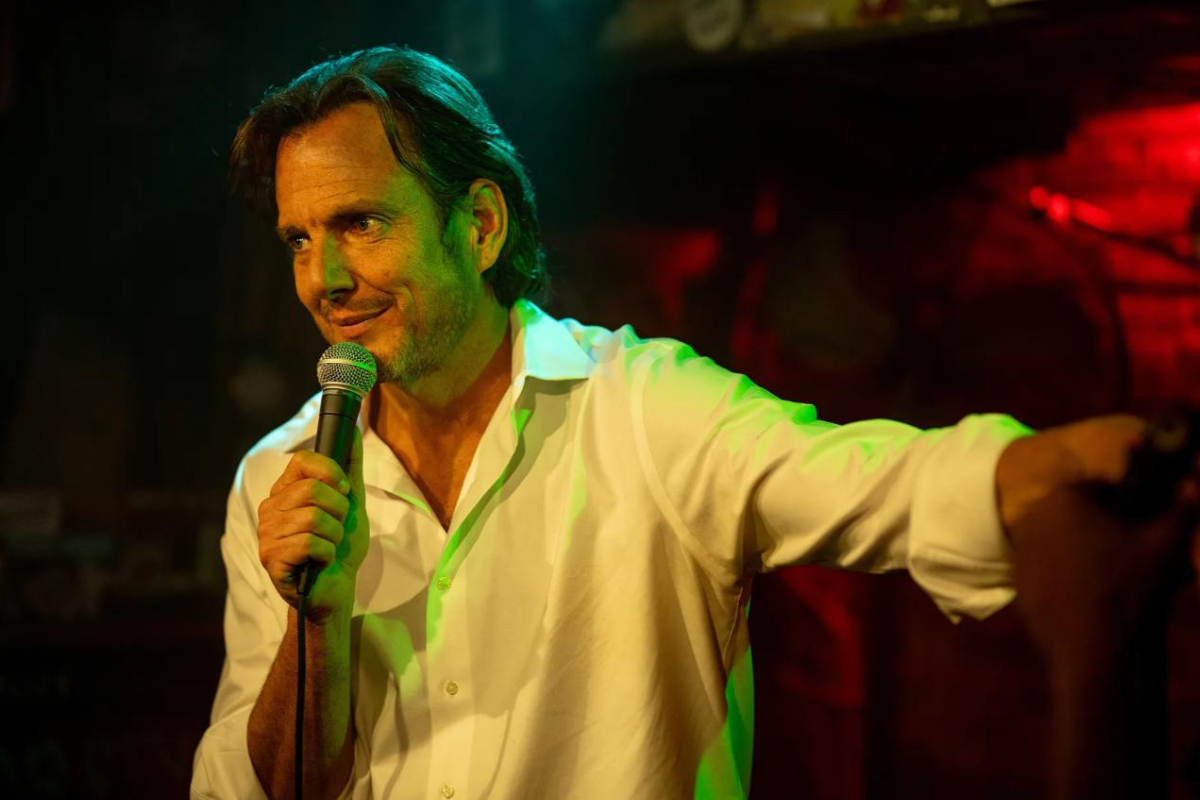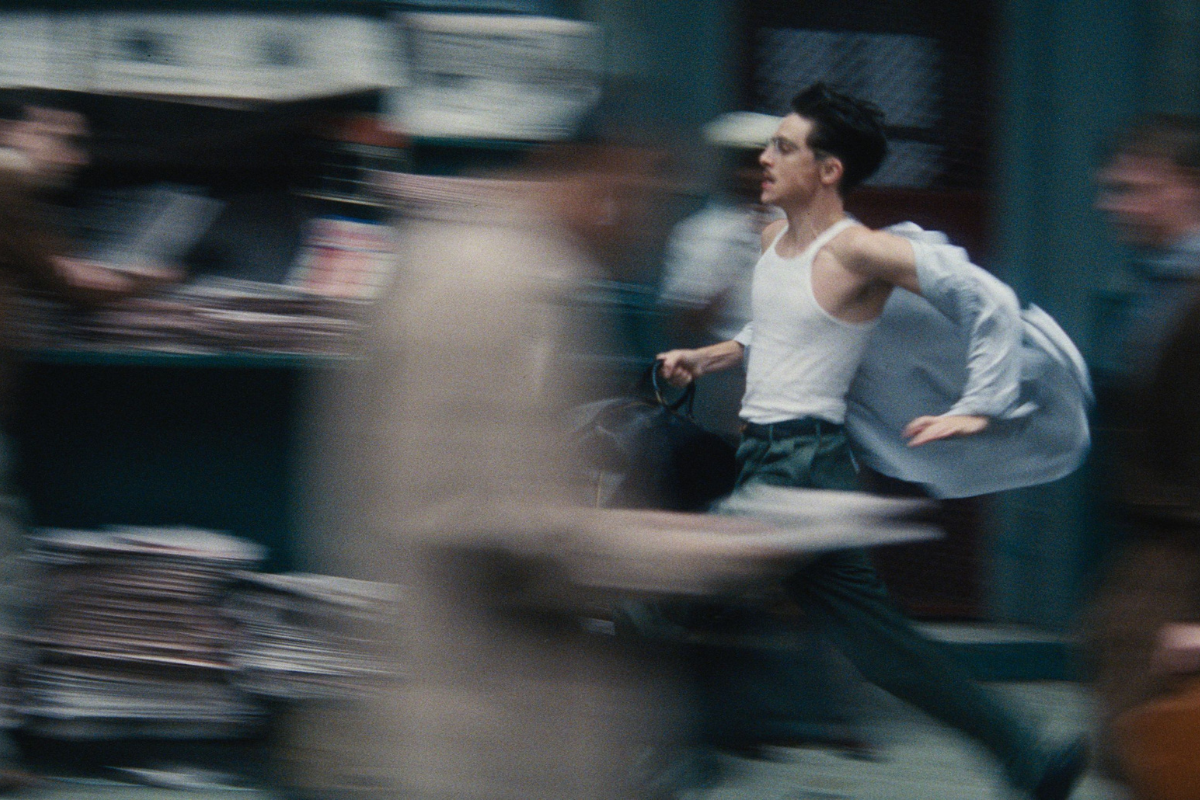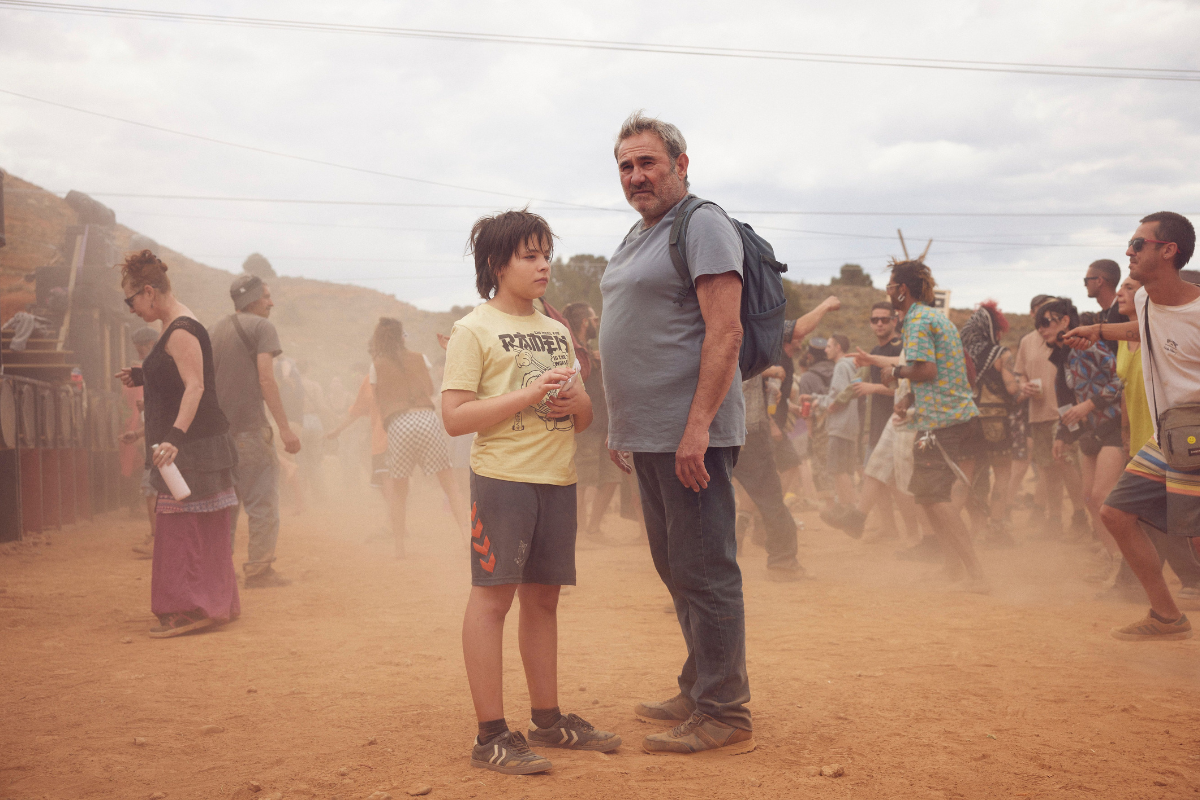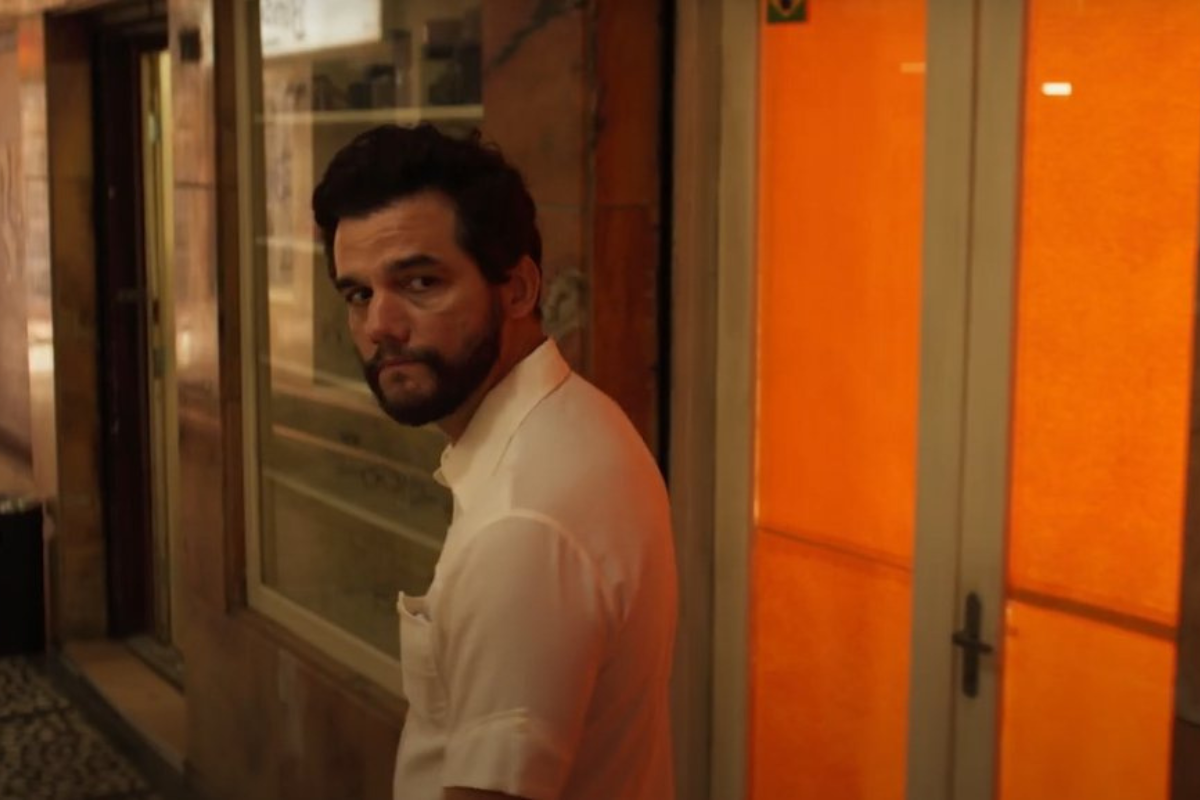MEET THE READER: Close Encounters of the Writing Kind
Steven Spielberg’s luminous epic about mankind’s first meeting with extra-terrestrial life was a critical and financial smash. Ray Morton explains how, four decades later, the film remains notable for many reasons.
Forty years after Steven Spielberg’s epic premiered about mankind’s first meeting with extra-terrestrial life, Close Encounters remains notable for many reasons.
Ray Morton is a writer, senior contributor to Script magazine and script consultant. His book A Quick Guide to Screenwriting is available online and in bookstores. Follow Ray on Twitter: @RayMorton1. Read Ray's full bio.
Close Encounters of the Third Kind was released forty years ago this November.
Steven Spielberg’s luminous epic about mankind’s first meeting with extra-terrestrial life was a critical and financial smash when it first opened and was quickly recognized as a modern classic. Four decades later, the film remains notable for many reasons:
- It’s a wonderful movie. It tells an exciting tale filled with action, thrills, terror, humor, and a genuine sense of wonder that leads to one of the most transcendent endings in movie history. Spielberg’s direction is masterful, as is the work of all of his principal collaborators, including production designer Joe Alves (who created the largest indoor set ever constructed for a motion picture), cinematographer Vilmos Zsigmond (who won an Academy Award for his work), editor Michael Kahn, composer John Williams (whose five-note sonic greeting from the aliens to mankind has become an iconic piece of film music), and special photographic effects supervisor Douglas Trumbull, who together with his partner Richard Yuricich and their team of ace technical magicians at the Future General company, created some of the most ambitious and stunning visual effects ever presented on film. The movie also features wonderful performances by Richard Dreyfuss, Teri Garr, Melinda Dillon, Bob Balaban, Cary Guffey, and Francois Truffaut.
- Along with Star Wars (which opened six months earlier) Close Encounters transformed science fiction and fantasy from vaguely disreputable “B” genres into “A” movie material in the eyes of both the general public and the film industry.
- It’s the first true Steven Spielberg movie. Jaws is a magnificent picture, but Close Encounters is the first of director’s movies to contain many of the elements that would become closely associated with him in the years that followed: an uplifting sci-fi/fantasy narrative infused with a tremendous sense of wonder; a focus on children; an exploration of life in the American suburbs; broken families; a fascination with World War II; a highly sophisticated use of visual and special effects; the use of a powerful John Williams score to create a powerful emotional response; cinematography that emphasizes smoke and strong backlighting; and Spielberg’s trademarked “push in” close-ups onto the awed faces of his characters.
- It was the first major sci-fi film to depict first contact as a potentially positive experience – that a meeting between mankind and beings from another world could be a joyous, peaceful, uplifting event, rather than an occasion of invasion and horror. In the years following CE3K and especially E.T. that became a commonplace idea, but in 1977 it was pretty revolutionary.
Like all great movies, Close Encounters began with a great script and so, to celebrate CE3K’s ruby anniversary, I thought it would be fun to take a look at how this classic movie was written.
Sometime in 1973, Steven Spielberg pitched an idea to producers Julia Phillips and Michael Phillips, then currently working on their Academy Award for Best Picture-winning film The Sting. Spielberg’s idea was to do a thriller about “UFOs and Watergate.”
Spielberg had been interested in the UFO phenomenon – the modern version of which kicked off in June 1947 (six months after Spielberg was born) when a private pilot named Kenneth Arnold reported encounter an unidentified flying object when he was flying near Mount Rainier in Washington State -- since he was a child. As a teenager he made a feature length 8mm film about UFOs menacing a small American town called Firelight and during his early years in Hollywood he wrote a short treatment called “Experiences” about UFOs menacing folks parked in a lovers’ lane. However, his pitch to the Phillips’s seems to have been more directly inspired by the 1972 publication of a book called The UFO Experience: A Scientific Inquiry by Dr. J. Allen Hynek.
Hynek was an astronomer and professor at Northwestern University who had spent years working as a consultant to Project Blue Book – a U.S. Air Force unit that was created to investigate UFO sightings, but whose true purpose seemed to be to debunk them. Hynek was initially glad to comply, feeling that most people who reported seeing UFOs were crackpots and that most sightings could be easily explained away as mistaken satellites, weather balloons, and swamp gas. Most could be, but Hynek soon discovered that some could not be. Intrigued, Hynek wanted to investigate these curious cases further, but found the Air Force resistant to the prospect. Hynek pressed on alone and eventually came to the conclusion that UFOs were real (he didn’t necessarily think they were flying saucers from outer space, but he did think there was something curious going on that was worth looking into) and that the U.S. government was covering them up. After Project Blue Book closed down, Hynek continued his investigations through his own Center for UFO Studies and wrote his book, in which he identified three distinct types of interactions with UFOs, which he called close encounters:
- A Close Encounter of the First Kind is the sighting of an unidentified flying object.
- A Close Encounter of the Second Kind is some sort of physical evidence (detritus, scorched earth, flattened grass, marks in the dirt, etc.) of an alien object.
- A Close Encounter of the Third Kind is actual contact with a UFO (and perhaps its occupants).
In the early 1970s, much questionable and illegal behavior on the part of the United States government was coming to light including illegal actions by the CIA, dishonest handling of the Viet Nam War, and most notably the Watergate scandal. Inspired by Hynek’s book, by all of his other UFO research, and by the tenor of the times, Spielberg came up with the idea to do a story about a Project Blue Book investigator whose job is debunk UFO sightings but discovers the US government is covering up the truth that UFOs are real; that they are really vehicles from outer space; and that extraterrestrials have been visiting Earth for some time. In the course of the story the investigator would expose the scandal and the film would end with the first meeting between mankind and aliens. Spielberg’s proposed title: Watch the Skies.
The Phillipses liked the idea and agreed to develop it with Spielberg. After setting the project up at Columbia pictures, they needed someone to write the script. The producers were currently preparing to make Taxi Driver and suggested its screenwriter Paul Schrader. The four met and tossed around ideas. Spielberg wanted to incorporate scenes based on some of the better known UFO incidents – including the “Midwestern Flap” (during which a bevy of UFOs were spotted over several Midwestern states and were chased by police and the military). Inspired by the “Night of Bald Mountain” sequence from Fantasia, he also wanted the final encounter to take place on a distinctive mountain. Schrader suggested that they play down the thriller aspects of the story and instead make it a story of spiritual transformation. Basing the protagonist’s arc on the story of St. Paul – whose job was to persecute Christians until he had a spiritual awakening on the road to Damascus and became a Christian himself – Schrader suggested they do a story about a skeptical UFO debunker who has a Close Encounter of the First Kind and then sets out to make contact with aliens. Spielberg and the Phillipses liked Schrader’s idea and agreed to the change in narrative emphasis. To explain how the protagonist is ultimately able to make contact with the e.t.s, they also adopted a suggestion from Brian De Palma and decided to have the aliens implant a psychic vision of the mountain in the hero’s mind (even though psychic phenomena are not a feature of most UFO lore).
Schrader wrote a draft but neither Spielberg nor the Phillipses liked it – they felt it was too dark, too heavy, too cerebral. Telling his story in a series of flashbacks, Schrader had focused primarily on the depression and inner torment brought on by the protagonist’s initial encounter with a UFO and emphasized the psychic aspects of the story over the unidentified flying objects -- in Schrader’s script, UFOs aren’t real vehicles but are instead mental projections implanted by the aliens in the collective subconscious of ancient man and first contact occurs deep in the recesses of the protagonist’s mind.
Spielberg and the Phillipses started over again with screenwriter John Hill, requesting he return to the original concept of a more traditional thriller about a UFO cover-up. Hill wrote a draft but upon reading it Spielberg decided that he no longer wanted to proceed with the thriller concept. He found it hard to care about a military protagonist and felt that neither the Schrader nor the Hill scripts captured the magic and wonder of UFOs and outer space that was the reason he wanted to make the movie in the first place. Spielberg realized that the only way he was going to get the movie he wanted was to write the script himself.
Rather than a military man, Spielberg focused his script on a suburban husband and father – a power company employee who has a close encounter of the first and second kinds while out one night on a call. Implanted with the psychic vision of a shape he doesn’t understand, he tries to discover the truth about UFOs and in the process becomes alienated from his family, his job, and his community. When he recognizes the haunting shape as a unique Wyoming mountain called Devil’s Tower, he defies reports of a toxic gas leak in the area (actually a government-sponsored hoax designed to keep people out of the area created by a shadowy team of UFO experts preparing for first contact) and makes his way to Devil’s Tower, where he witnesses the arrival of a fleet of UFOs and the first encounter of man and alien before ultimately going aboard the alien mothership himself and departing for the stars.
Not a natural writer, Spielberg struggled to pen his screenplay. It took him a long time, but he eventually laid out the story he wanted to tell and the movie he wanted to make. No longer a tortured drama or a dark thriller, it became – in the words of Michael Phillips – “what we now recognize as a Steven Spielberg film – a joyous roller coaster.”
Columbia approved Spielberg’s script – now named Close Encounters of the Third Kind -- and the film went into pre-production in the late summer of 1975. With Hynek now on board the project as a consultant, Spielberg did a rewrite to further develop the narrative. In this draft, he made the leader of the secret UFO team (formerly an American) a Frenchman in honor of two of the world’s best known UFO experts – Claude Poher and Jacques Vallee. Finally, he determined that the aliens would use a unique musical tone to communicate with the people of Earth.
In early 1976, while casting the movie in New York, Spielberg and TV comedy writer Jerry Belson did another rewrite that fleshed out the characters and added humor to the piece. Spielberg then gave the script to his friends (and the screenwriters of his first feature The Sugarland Express) Hal Barwood and Matthew Robbins to review. They were very enthusiastic about the piece, although they did have many, many notes. Spielberg liked their suggestions, but with the movie about to enter production he didn’t have the time to implement them himself. Barwood and Robbins were hired to do an additional rewrite. They saw themselves as “mechanics” – taking ideas that Spielberg had laid out in his original drafts and “making them work in a [more] dramatic way.” During this process, they suggested Spielberg enhance the minor role of Jillian Guiler, a fellow believer who Roy meets on his way to Devil’s Tower, by giving her a young son who is kidnapped by the aliens and is then returned at the end of the movie for a tearful mother-child reunion. Spielberg loved the idea and the trio worked it into the narrative.
Although Spielberg did not do any traditional writing while the movie was in production, he did continue to craft the narrative as he shot. Based on a suggestion by Douglas Trumbull, Spielberg improvised the entire plot thread involving the Kodaly hand signals (which leads to one of the film’s most touching and iconic final moments – the lead e.t.’s final bittersweet wave to Francois Truffaut) during filming and after taking a liking to actor J. Patrick McNamara, who was originally cast to play a small part in only one brief sequence, Spielberg put him in scene after scene (often allowing him to improvise his own dialogue) until he became a major character in the movie, one who actually speaks the first line in the finished film.
When filming wrapped, Spielberg and Kahn began editing the picture. When the first cut was done, they realized that the UFO team’s subplot wasn’t as clear as it needed to be (specifically, it wasn’t clear how the team knew they had to go to Devil’s Tower to meet the aliens and also that the team was behind the gas leak cover story) so Barwood and Robbins returned to write some additional scenes set in a radio telescope that explained how the team discovers the co-ordinates for the Wyoming mountain (and in the process changed the profession of the character played by Bob Balaban – originally Truffaut’s professional translator, he was now a map-maker drafted into translation service because he happens to speak French). Finally, Spielberg added a new opening sequence (the original version began with the air traffic control sequence) in which the team discovers a fleet of fighter planes missing since WWII (and presumably stolen by the extra-terrestrials) in the Sonoran Desert.
The WGA awarded Spielberg sole screenplay credit, which Michael Phillips felt was appropriate. As he told Spielberg biographer Joseph McBride: “Close Encounters is really Steven’s script. He got help from friends and colleagues here and there, but 99.9 percent is Steven Spielberg.” Spielberg gladly accepted the credit, although during his promotional tour for the film’s release and in the years after he has always acknowledged the contributions of the other writers to the finished product.
Spielberg continue to shape his story even after the movie was released. In 1980, he re-edited the film, reinstating some bits he originally cut and deleting some things that had originally been included. He also added two new sequences: one in which the UFO team discovers a missing ship in the Gobi Desert and a second in which we find out what happens to Richard Dreyfuss after he enters the mothership. Still not satisfied, Spielberg prepared a third cut of the film in 1997, dropping the sequence set inside the mothership and adjusting a few other bits here and there. As far as we know, he hasn’t made any changes since, but given his endless inventiveness and restless creativity, it wouldn’t be surprising to find that Spielberg is still honing his story four decades on. We’ll find out when Close Encounters of the Third Kind returns to theaters on September 1, 2017 for a one-week fortieth anniversary engagement.
My book Close Encounters of the Third Kind: The Making of Steven Spielberg’s Classic Film is available in bookstores and online at Amazon () and other outlets.
THE END
Copyright © 2017 by Ray Morton
All Rights Reserved
No portion of this article may be copied, reprinted,
or reposted without the permission of the author
However, feel free to link to this piece to your heart’s content
Get tips on writing stories that stand up over time in Dan Calvisi's on-demand webinar
Story Mapping the Films of Christopher Nolan
Ray Morton is a writer and script consultant. His many books, including A Quick Guide to Screenwriting, are available online and in bookstores. Morton analyzes screenplays for production companies, producers, and individual writers. He can be reached at ray@raymorton.com. Twitter: RayMorton1






